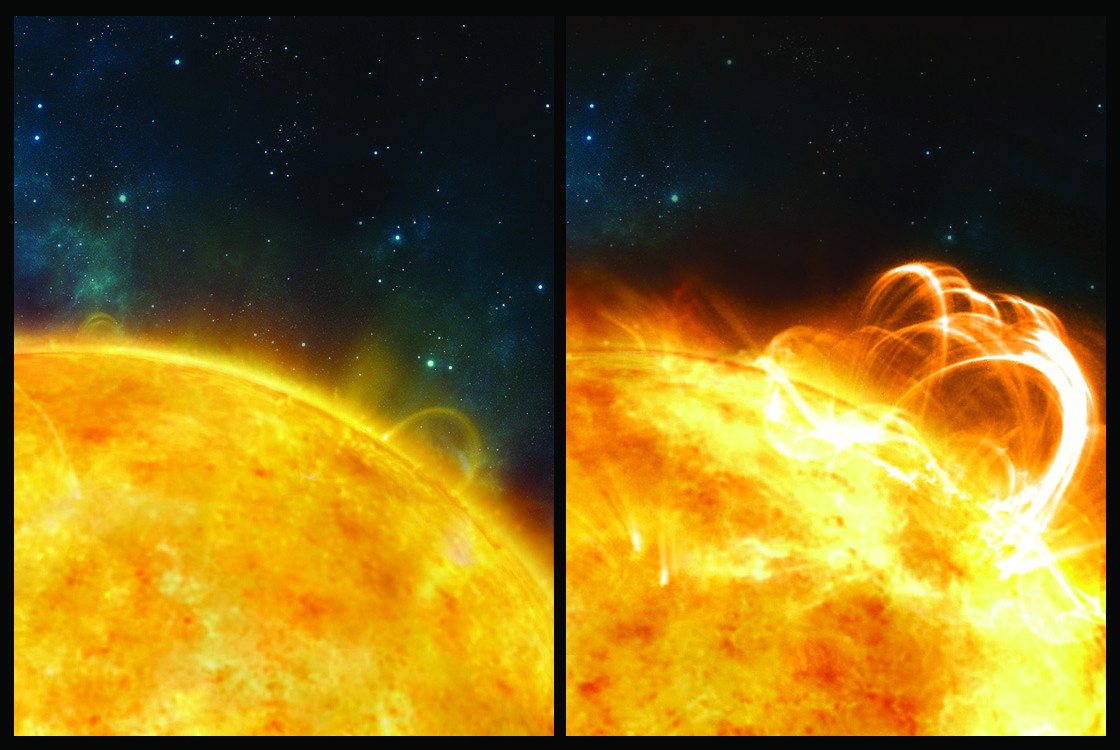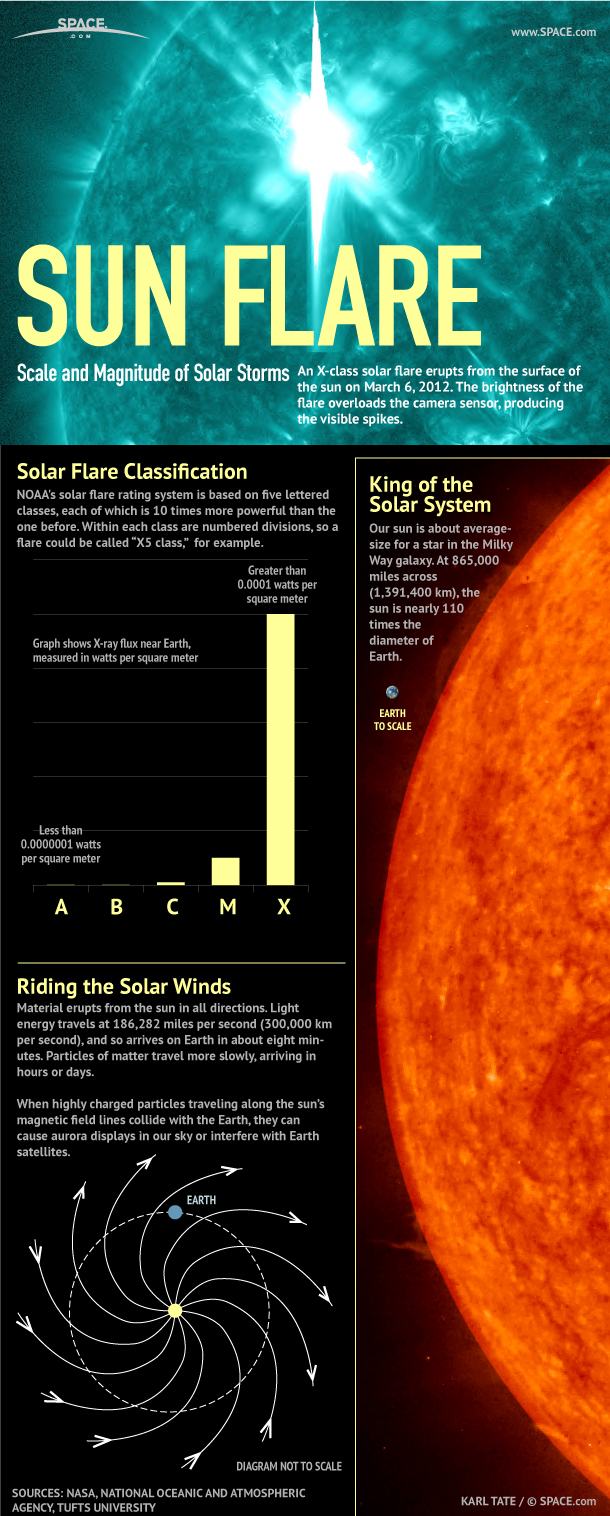
The sun is capable of firing off an incredibly powerful superflare that could wreak havoc on Earth's technology-dependent society, a new study suggests.
The same basic processes drive the "normal" flares of high-energy radiation emitted by the sun and superflares blasted out by faraway stars, which can be thousands of times more powerful, researchers found.
This result "supports the hypothesis that the sun is able to produce a potentially devastating superflare," study co-author Anne-Marie Broomhall, from the University of Warwick in England, said in a statement.

The research team analyzed a superflare emitted by the binary star KIC9655129, which lies about 1,500 light-years from Earth, using NASA's planet-hunting Kepler space telescope.
Kepler is sensitive enough to pick up tiny brightness fluctuations coming from stars. Indeed, that's how the telescope finds planets. (Subtle brightness dips can be caused by orbiting worlds crossing their stars' faces, as seen from Kepler's perspective.)
Observations made using Kepler revealed key similarities between KIC9655129's superflare and eruptions on Earth's sun, researchers said.
"Occasionally, solar flares contain multiple waves superimposed on top of one another," lead author Chloe Pugh, also of the University of Warwick, said in the same statement. "We have found evidence for multiple waves, or multiple periodicities, in a stellar superflare, and the properties of these waves are consistent with those that occur in solar flares."
Get the Space.com Newsletter
Breaking space news, the latest updates on rocket launches, skywatching events and more!
Strong solar flares can cause temporary radio blackouts, and they're often accompanied by massive explosions of solar plasma called coronal mass ejections (CMEs) that can be even more disruptive. Powerful CMEs that hit Earth, for example, can trigger geomagnetic storms that affect GPS navigation, radio communications and power grids for extended periods of time.
So the consequences of a superflare (and possible associated super-CME) could be disastrous, Pugh said.
But you shouldn't worry too much about this worst-case scenario, she added.
"Fortunately, the conditions needed for a superflare are extremely unlikely to occur on the sun, based on previous observations of solar activity," Pugh said.
The new study was published in The Astrophysical Journal Letters.
Follow Mike Wall on Twitter @michaeldwall and Google+. Follow us @Spacedotcom, Facebook or Google+. Originally published on Space.com.

Join our Space Forums to keep talking space on the latest missions, night sky and more! And if you have a news tip, correction or comment, let us know at: community@space.com.

Michael Wall is a Senior Space Writer with Space.com and joined the team in 2010. He primarily covers exoplanets, spaceflight and military space, but has been known to dabble in the space art beat. His book about the search for alien life, "Out There," was published on Nov. 13, 2018. Before becoming a science writer, Michael worked as a herpetologist and wildlife biologist. He has a Ph.D. in evolutionary biology from the University of Sydney, Australia, a bachelor's degree from the University of Arizona, and a graduate certificate in science writing from the University of California, Santa Cruz. To find out what his latest project is, you can follow Michael on Twitter.









